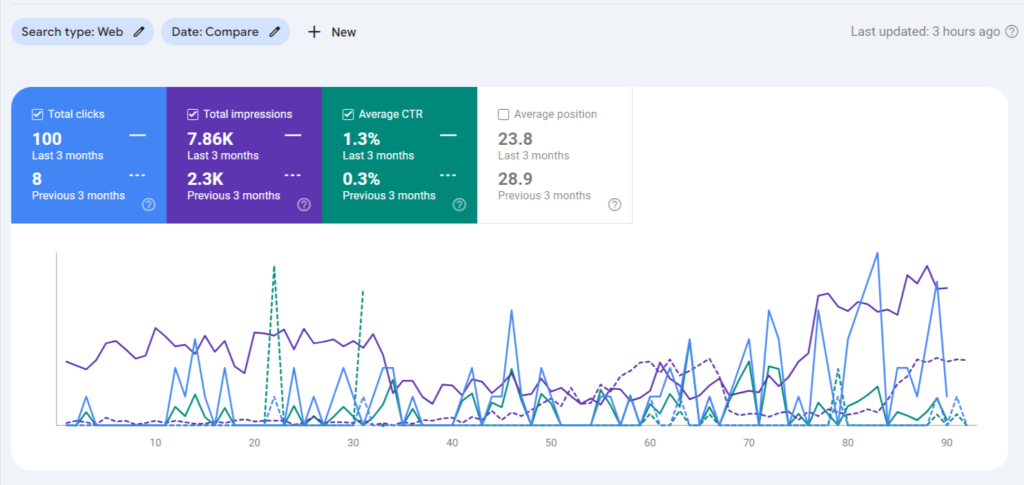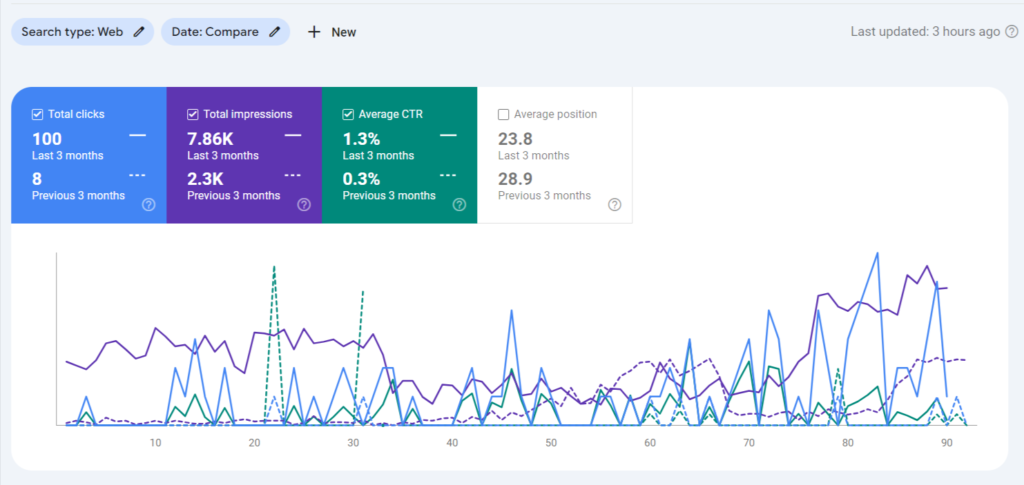I started working on a side project on a creative segment.
A fresh new website. (This is the first individual project that I have worked on without any team and guidance.)
The goal is to experiment with different types of content and see how they perform in terms of traffic and engagement.
This case study documents the first 100 clicks and what I learned along the way.

The Experiment Setup
The project started with a fresh newly installed website —no prior content, no existing audience.
I decided to test two types of content:
- High-end content – written from scratch.
- AI-generated content – aimed at creating internal links between related articles.
In total, I published three blog posts with high-quality, human-written content and five blog posts generated by AI.
The AI content’s primary role was to support the main articles through internal linking, a technique that helps users navigate the website and improves SEO.
The Timeline
The content was posted between December 2023 and January 2024.
After that, I paused all new content creation to observe how the existing posts performed over time.

Keyword Strategy
Keyword selection was a crucial part of the experiment. I chose a mix of moderately difficult keywords and some with low search volume (10-20 searches per month), based on SEMrush’s keyword research tool.
This blend was intended to test the content’s ability to rank at different levels of keyword competitiveness.

The Turning Point
Fast forward to March 2024, when Google rolled out a significant algorithm update. This update seemed to act as a catalyst for the website, which started gaining traffic steadily.
By the end of six months, the site had its first 100 clicks. It wasn’t a viral success, but it was a clear indicator that the experiment was moving in the right direction.
Conclusion of Case Study
Here’s what I discovered through this experiment:
1. Google’s Algorithms are Unpredictable: Despite extensive research and following best practices, the exact workings of Google’s algorithms remain a mystery.
Sometimes, it’s about being patient and waiting for the algorithms to favor your content.
2. AI Content Can Be Effective: Contrary to popular belief among SEO experts, AI-generated content can play a significant role.
While many argue that only unique, human-written content works, my experiment showed that a combination of AI and human content can produce quality results.
The AI content helped create a robust internal linking structure, which likely contributed to the overall SEO success.
3. Human Editing Matters: The high-end content written by creative professionals brought in the human emotions and uniqueness that captivated readers. This combination of AI efficiency and human creativity proved to be effective. Don’t just simply post AI content.
Conclusion
In SEO, there are no hard and fast rules. And certainly no shortcuts.
While the journey to the first 100 clicks took time, the insights gained are invaluable for anyone looking to explore innovative SEO techniques.
Looking forward to working on the project with more consistency to see some significant results.



